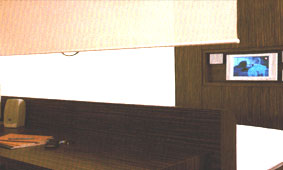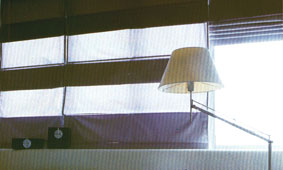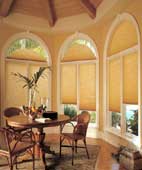|
Guide to Window Blinds – Types of BlindsIn this guide to window blinds, you'll get to see why blinds are good alternatives to curtains since they are less bulky, more durable than fabric, and cheaper and easier to clean. They allow you to control the degree of sunlight, shading, ventilation and privacy. Here’s a rundown on the types of window blinds available:


With advances in design and technology, you can even get blinds for oddly shaped window! 
Guide to Window Blinds - Choosing the Right BlindsChoosing the right window covering can be baffling with the vast choices available. Try not to choose a style simply based on it’s decorative effect alone. As part of a guide to window blinds, here are some questions to mull over before you place your order:
What are your needs for privacy? You’ll probably need more privacy in the bedroom compared to the living or dining area, so a different covering can be used for each.
Which direction does your window face? Generally as a guide to window blinds, go for blinds with an ‘openness factor’ of five percent or less to avoid glare problems for windows facing east-west direction. If the window faces the north-south direction, you can select one with “openness factor” of more than five percent because there’s minimal direct sun exposure. What are your needs for light control? If light control is an issue, go for Venetian or vertical blinds, louvers redirect light, and control the degree of light penetration into the room – just tilt or rotate the slats. How do your windows open and how often do you open them? Some windows open up, some out and some in. It’s no point installing nice-looking blinds with tangled up slats whenever you want to get some air. What’s your budget? Quality window blinds can cost even more than curtains, so they can be a hefty investment. As a guide to window blinds, make sure your money is well spent by choosing your blinds according to each room’s specific requirements and the impact you want to make if you are design-conscious. Guide to Window Blinds - Dressing Your Window and Home DecorIf you want a dramatic look, choose a color that contrasts with your wall color. However, if you want to make your window appear larger, blend them so that the blinds ‘disappear’. For a luxe look, introduce textures with sleek, textured or shiny finishes. For a more casual and laidback feel, use wood slats or matte textures e.g. raw silk, cotton, linen.
Your window covering also play up the mood and the feel of the room. So if you want something romantic and soft, pastel colors or lace finish will do the trick.
Opaque blinds are not limited to the window. As shown above, it doubles up as a divider in this bedroom. If you need privacy rather than sun shade, install your blinds to open from the bottom up as seen below.

Living Room | Dining Room | Bedroom | Kitchen | Bathroom |
Space Organization | Home Lighting | Home Decor Fabric |
|



